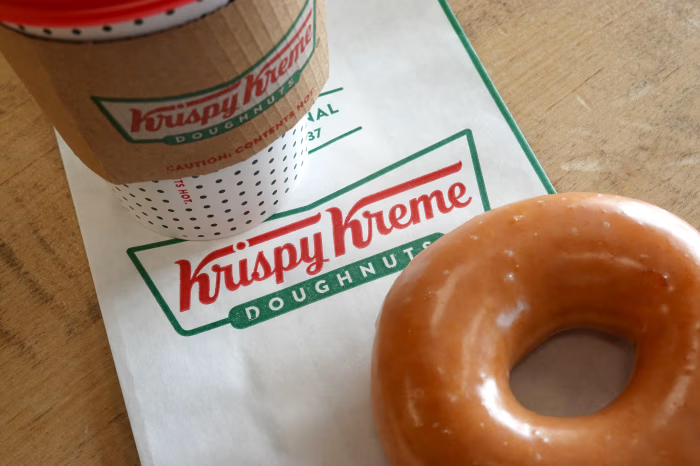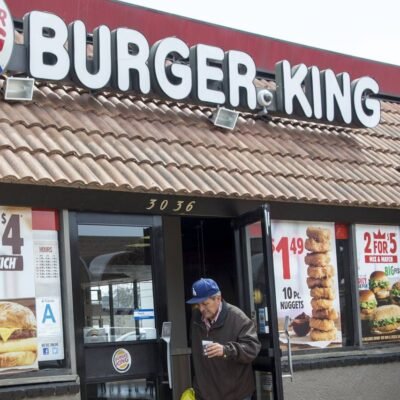Krispy Kreme loss widens as the popular doughnut chain struggles with a mix of financial impairments and falling sales. The company, long loved for its iconic glazed doughnuts, is now facing mounting pressure as earnings take a hit and its stock price wobbles.
In its most recent quarterly report, Krispy Kreme revealed a much wider net loss compared to the same period last year. The primary reason? A combination of impairment charges—particularly related to store closures and underperforming assets—and declining sales across several markets.
This article breaks down what’s going wrong at Krispy Kreme, how the brand plans to bounce back, and what this means for investors, customers, and the wider food retail industry.
Krispy Kreme’s Financial Results: A Closer Look
Krispy Kreme reported a net loss of $42.3 million for the quarter ending July 2025, a steep jump from the $1.8 million loss reported in the same quarter last year. This widening loss is a red flag for a company that’s been trying to position itself as a growth brand in a highly competitive food and beverage market.
Key figures from the earnings report:
- Total revenue: $408.9 million (down 2.6% from last year)
- Net loss: $42.3 million, compared to $1.8 million last year
- Same-store sales: Down by 4.2%
- Gross margin: Compressed due to rising input and labor costs
- Impairment charges: Over $35 million, mainly due to underperforming stores
While Krispy Kreme has been expanding its global footprint over the past few years, this report suggests that some of those investments haven’t paid off as expected.
What Caused the Impairments?
The major reason Krispy Kreme loss widens this quarter is the high level of impairment charges.
Impairment charges are one-time costs companies record when their assets lose value. In Krispy Kreme’s case, several physical locations and supply chain investments did not meet performance expectations.
Main causes of impairments:
- Store closures in international markets, including some locations in the UK and Australia
- Loss of value in supply chain assets, particularly in logistics and production hubs
- Rising operating costs that have made certain locations unsustainable
Krispy Kreme’s leadership stated that they are reviewing their global real estate footprint and may pull out of or reconfigure locations that are dragging down performance.
Sales Decline and Market Trends
Beyond impairments, falling sales have been a concern. Consumer behavior is shifting in several key markets.
Why are Krispy Kreme’s sales falling?
- Changing consumer habits: Health-conscious trends are leading many to cut down on sugary snacks
- Rising inflation: Higher prices are driving consumers toward cheaper alternatives
- Increased competition: Fast food and coffee chains like Dunkin’ and Starbucks are offering similar sweet treats
- Supply chain challenges: Delays and higher logistics costs have affected product availability
Even though Krispy Kreme has tried to innovate with new product launches and premium collaborations, it hasn’t been enough to reverse the decline in foot traffic and average order values.
Strategic Missteps or Just a Tough Market?

Many analysts are now debating whether Krispy Kreme’s problems are market-driven or the result of strategic missteps.
The company’s recent push to expand its “hub and spoke” distribution model—where large centralized facilities (hubs) supply smaller retail points (spokes)—hasn’t generated the savings and scale benefits executives promised.
This model works well in dense urban areas, but has proved expensive and inefficient in suburban and international locations. As a result, several of the company’s hubs have become loss-making units.
How Krispy Kreme Plans to Recover
Despite the bad news, Krispy Kreme is not giving up. CEO Josh Charlesworth, who took over the helm earlier this year, outlined a multi-step recovery strategy in the earnings call.
Key elements of the recovery plan:
- Streamlining global operations: Closing or downsizing underperforming locations
- Refocusing on core markets: Prioritizing North America and select international regions
- Reinvesting in e-commerce and delivery: Expanding partnerships with apps like DoorDash and Uber Eats
- Healthier options and seasonal products: Catering to changing tastes without losing brand identity
- Operational efficiencies: Cutting back on supply chain costs and renegotiating vendor contracts
Charlesworth also stated that the company would slow down expansion and focus on profitability over growth in the coming quarters.
Impact on Stock Price and Investor Sentiment
Following the earnings report, Krispy Kreme shares dropped nearly 8% in after-hours trading, reflecting shaken investor confidence.
Over the past year, the company’s stock has underperformed the market, dropping nearly 20% while the broader consumer discretionary sector showed slight gains.
Analyst reactions:
- Morgan Stanley downgraded the stock from “equal weight” to “underweight”
- JPMorgan expressed concerns over cash flow and long-term profitability
- Wells Fargo suggested a “wait and see” approach as management executes the turnaround plan
While some analysts believe Krispy Kreme still has strong brand equity and customer loyalty, the next two quarters will be critical.
Broader Implications for the Fast-Food Industry
Krispy Kreme’s challenges are not unique. Many fast-food and quick-service brands are facing similar hurdles:
- Higher labor and commodity costs
- Pressure to innovate with healthier and sustainable options
- Greater reliance on delivery and digital ordering
- Need for more flexible retail formats
Krispy Kreme’s setbacks serve as a cautionary tale for others in the industry. Aggressive expansion, especially in uncertain economic times, can backfire if not supported by strong operational efficiency and localized strategies.
Customer Reaction and Social Media Buzz
Krispy Kreme still enjoys a loyal fanbase, especially in North America. However, social media reactions to the financial news were mixed.
Some loyal customers expressed concern that their favorite local outlets might shut down. Others joked that if Krispy Kreme offered discounts, they’d be happy to “do their part” to save the company.
The company has not announced any changes in pricing or promotions as a direct response to the financial results, but it’s clear that customer sentiment still plays a huge role in the brand’s resilience.
What’s Next for Krispy Kreme?
Looking forward, Krispy Kreme has a long road ahead if it wants to regain profitability and investor trust. The brand’s iconic status gives it a strong foundation, but that alone won’t be enough.
Krispy Kreme must:
- Trim the fat from its operations
- Adapt to evolving customer demands
- Focus on markets where it can win
- Continue building a scalable, sustainable business model
The good news? The leadership appears to understand the stakes and is taking bold, if painful, steps to correct course.
Conclusion
The headline is clear: Krispy Kreme loss widens, driven by impairments and falling sales. But this is not necessarily the end of the road. If the company successfully retools its strategy, leans into its strengths, and improves operational efficiency, it can bounce back stronger.
Do Follow USA Glory On Instagram
Read Next – Shopify European Boom Fuels Strong Q2 Growth






